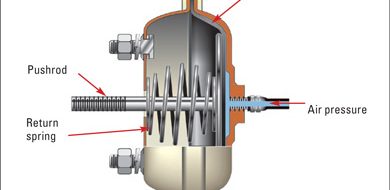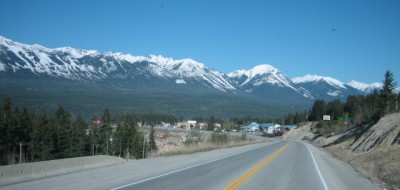We had a customer come into Henderson’s Line Up recently that had a ’94 Beaver with 106,835 miles on it, and was concerned that the automatic ride height adjustment was not working properly. Turns out he had never had the element for the coach’s air drying system replaced, and as a result, all the ride height valves were rusted up and weren’t working properly anymore.
Unfortunately, he ended up having to replace all of the ride height valves, leveling block for the air leveling system, solenoids, etc.-at a total cost of over $2,500. It seemed odd to us that a customer could have a coach that seemed otherwise well maintained, yet somehow the importance of servicing the air system had been overlooked. The good news is, you can prevent the same thing from happening to you.
There is water in air, and when you compress it, that water accumulates-that is why any system utilizing compressed air has a water trap of some kind. Water is the enemy of any air system-it causes corrosion and eventual failure of relays, valves and other important components. With air brakes, excess water accumulation reduces the volume of air in the system, making it possible to run out of air. If this happens, the system will no longer work, and will cause the emergency brakes to apply. That’s why you can’t move an air brake coach until the air pressure reaches 60 psi-the emergency brakes won’t release until it reaches that pressure.
An air dryer removes the water from the air. When you hear that loud “‘pssssshhh” sound on a coach with air brakes, that’s the purge valve opening, forcing air backward through the filter media, which is a desiccant that wicks moisture from the air. It forces a blast of air through the desiccant media to dry it out, but eventually, it just becomes saturated with water.
To prevent this, you should make sure that the air storage tanks get drained (either by you or a service center) every six months or so. You want to just crack the petcock open-if you open it fully, you can actually let the air out, but not the water. Let the water dribble out-give it 30 to 60 seconds or so, so that the water is coming out clean and there is no moisture. There are usually three tanks, a “wet tank” that comes off of the air compressor, a primary tank and a secondary tank-the location varies depending on the coach manufacturer, the chassis, etc.
Some of the newer motorhomes don’t have petcocks, in which case you’re in real trouble if there’s water in the system. I think it’s a bad design, personally-just because you have an air dryer doesn’t mean there’s no water in the system.
Changing the air dryer is similar to changing an oil filter-the filter just spins on. These should be replaced every two-three years. If you’re in an area where there is a lot of moisture in the air, may need to replace sooner; if you’re in a dry climate like Arizona, less often.
If you don’t do the service on your coach, do yourself a favor and make sure the service tech knows about servicing these items on a regular basis-any good shop should know about this and include it as part of the maintenance schedule.





Pingback: flyttstädning stockholm
Pingback: site
Robert A. Henderson
Hello Bill,
Thank you for the comment. Water is the enemy of any braking system air or hydraulic. The problem with braking systems is that they are out of sight and out of mind and time gets away from us so often times maintenance gets neglected. Thank you for the sight as well. Have a good day! Robert
Bill
Excellent article.
The importance of drying compressed air has huge relevance in the RV industry, as well as many, many others.
If I might suggest…here’s a site with tons of info about using compressed air, including dealing with water generated through the compressing of air.
Cheers,
Bill